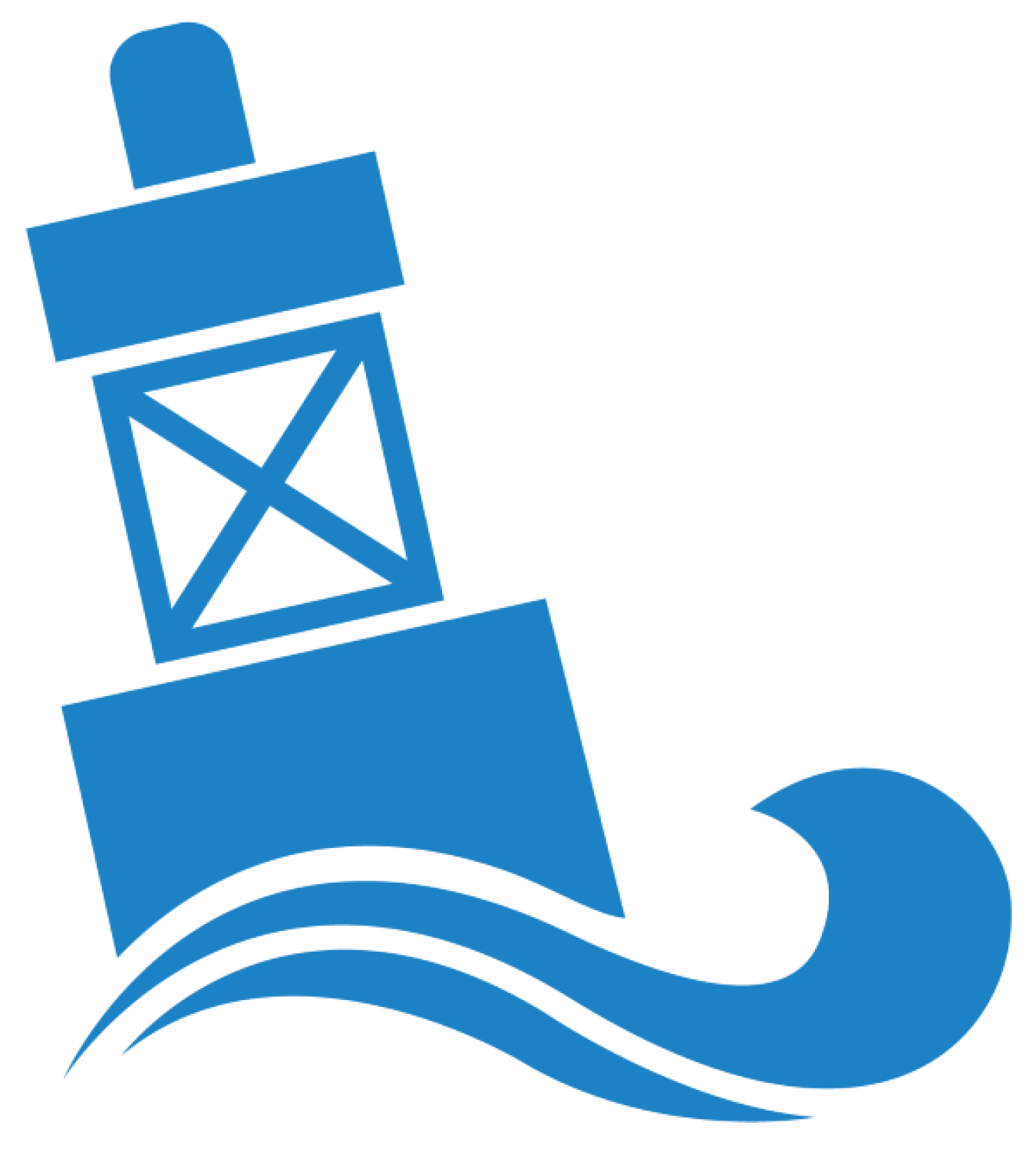Team of industry and academic researchers advance the validation of a novel floating oscillating surge wave energy converter at the Stevens Institute of Technology in New Jersey.
Water Power Technologies Office
March 9, 2022Marine Energy Program
Technology-Specific System Design and Validation
Project Name: Floating Oscillating Surge Wave Energy Converter Using Controllable Efficient Power Take-Off System
Project Team: Stevens Institute of Technology (lead), Virginia Tech, Resolute Marine Energy, Sandia National Laboratories, and National Renewable Energy Laboratory
Lead Recipient Location: Hoboken, New Jersey

Floating oscillating surge wave energy converters (FOSWECs) can transform the energy from ocean waves into usable power without needing to be fixed to the seafloor, enabling them to be deployed in deeper waters and avoid impacting the underwater environment. However, these unique devices require specific facilities for testing. Now, researchers from Stevens Institute of Technology, Virginia Tech, and Resolute Marine Energy have tested a one-tenth-scaled model of their new FOSWEC design using the physical and numerical marine testing capabilities at the Davidson Laboratory and U.S. Department of Energy funding. The FOSWEC design is an improvement to the prior national lab-developed Reference Model 5 and consists of a floating platform, two pivoting flaps, and an innovative, out-of-water power take-off system.
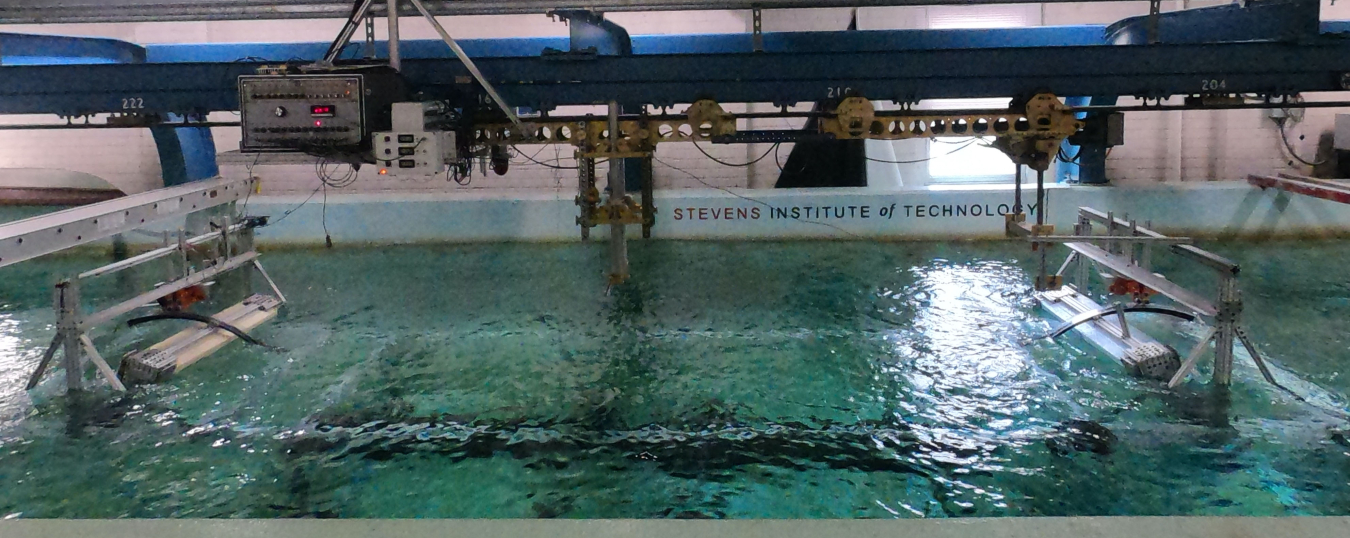
A two-flap floating oscillating surge wave energy converter is tested. The tests demonstrated the out-of-phase-motion of the two flaps resulted in reduced loads and motions of the supporting platform, which reduces the cost of deployment in deep water. Photo courtesy of Stevens Institute of Technology
The tests validated the responses of the flaps that operate out of sync and help in stabilizing the FOSWEC, the need to control the platform mooring because of its potentially significant negative impact on the flaps' motions, and the importance of quality control in the manufacturing process of different components (e.g., the belts of the power take-off system) to ensure optimal performance. The team is also working closely with Sandia National Laboratories on control co-design and the National Renewable Energy Laboratory (NREL) on power take-off testing using its dynamometer. Next, working with NREL with funding from the U.S. Testing Expertise and Access to Marine Energy Research (TEAMER) program through its second request for technical support, the team will leverage the lab’s modeling expertise on mooring systems. Through these collaborations, the team is advancing the FOSWEC device design and moving one step closer to the goal of building and deploying an efficient 1:2-scaled device with low levelized cost of energy.
Technology-Specific System Design and Validation Projects
-
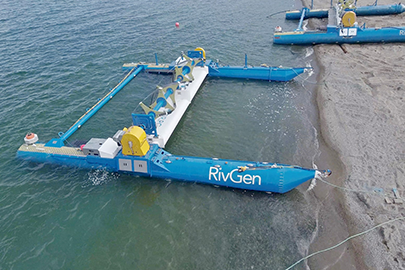 Two deployed river hydrokinetic system help power Igiugig, Alaska, simultaneously reducing diesel dependence and supporting a local workforce.
Two deployed river hydrokinetic system help power Igiugig, Alaska, simultaneously reducing diesel dependence and supporting a local workforce. -
 Team conducts in-water demonstrations for a novel “Water Horse” hydrokinetic device that sits above rushing rivers, taking a first step to collect data to analyze its true costs and validate its potential as a reliable, lower-cost source of clean energy.
Team conducts in-water demonstrations for a novel “Water Horse” hydrokinetic device that sits above rushing rivers, taking a first step to collect data to analyze its true costs and validate its potential as a reliable, lower-cost source of clean energy. -
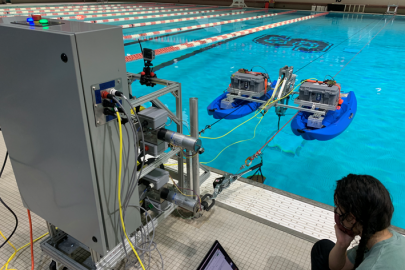 Research team conducts tests to advance a flying underwater kite that could power deep sea research by harnessing and storing clean ocean energy from slow-moving currents.
Research team conducts tests to advance a flying underwater kite that could power deep sea research by harnessing and storing clean ocean energy from slow-moving currents. -
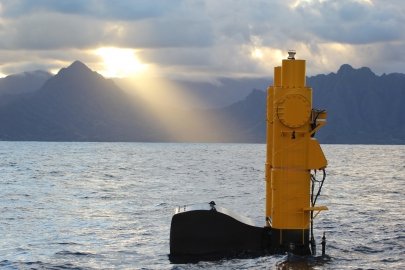 WPTO-supported committee publishes new internationally recognized standards that will pave the way for the most promising marine energy technologies to achieve commercialization.
WPTO-supported committee publishes new internationally recognized standards that will pave the way for the most promising marine energy technologies to achieve commercialization.
WPTO's Marine Energy e-newsletter shares news and updates on tools, analysis, and emerging technologies to advance marine energy.
The WPTO e-newsletter brings funding opportunities, events, publications, hydropower, and marine energy updates directly to your inbox.


